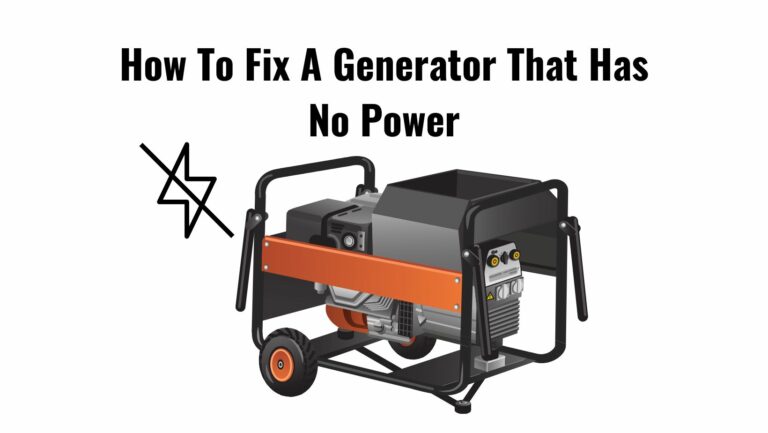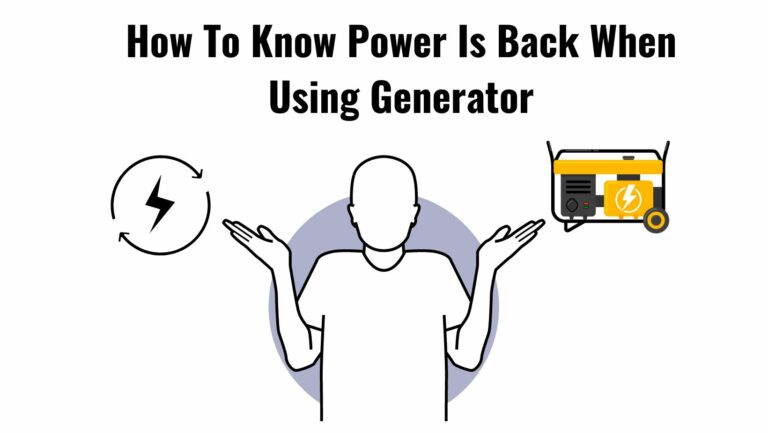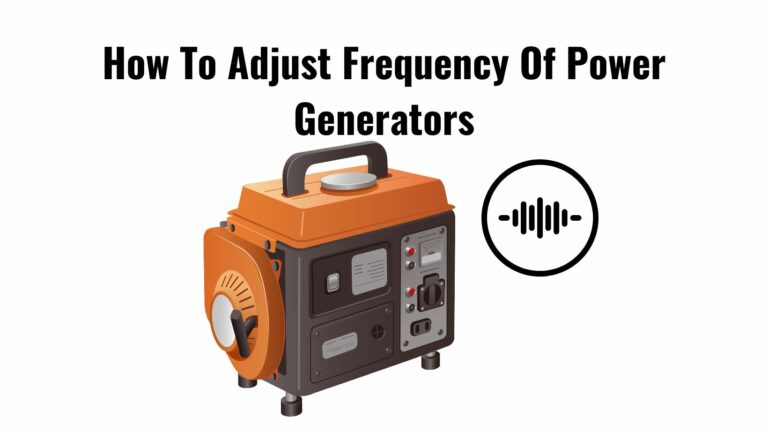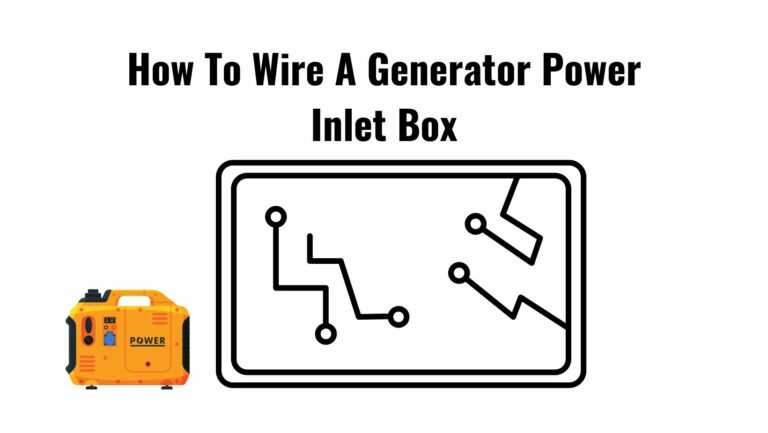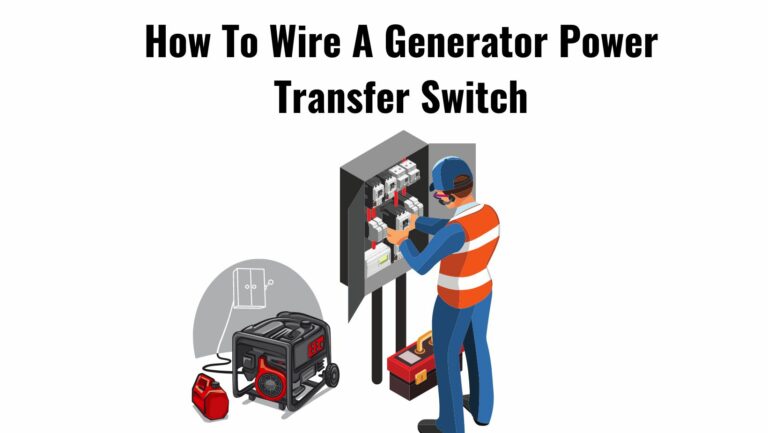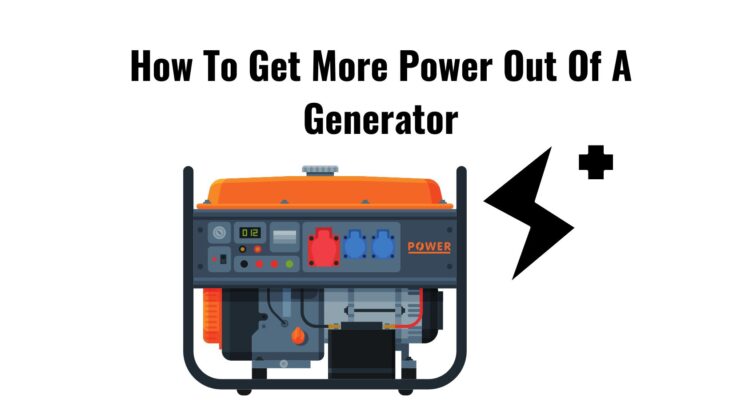
In this day and age, portable generators are becoming increasingly essential for both household and outdoor activities. Whether it’s for providing power during a blackout or for powering up your camping gear, having a generator on hand can be a lifesaver.
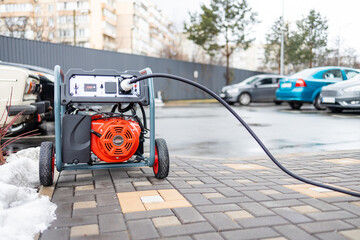
However, not all generators are created equal, and getting the most out of your generator requires some knowledge and preparation. In this blog post, we will dive into the world of generators and explore various tips and tricks on how to get more power out of your generator.
We will cover topics such as voltage production, matching the load and power output, and ensuring security during power outages. Whether you’re a seasoned generator user or just starting out, this guide will provide you with the information you need to get the most out of your generator. So, let’s get started!
Understanding Generator Power Ratings
When it comes to powering your home, job site, or outdoor activities, a generator can be a lifesaver. But with so many options available, it can be confusing to choose the right one for your needs. In this section, we’ll go over the basics of generator power ratings to help you make an informed decision.
Explanation of Watts and Volt-Amps
Watts and volt-amps are two of the most important terms to understand when choosing a generator. Watts (W) refers to the unit of power used to measure the rate at which energy is being used. Volt-Amps (VA) refers to the unit of apparent power, which is the combination of real power (watts) and reactive power (the energy stored in a magnetic field). In other words, volt-amps take into account both the active power and the power needed to keep the generator running.
It’s important to note that not all the energy generated by a generator is usable power. Some energy is lost as heat, noise, or other waste. This is why you’ll see the term “rated output” or “maximum output” when shopping for generators. These terms refer to the maximum amount of usable power that the generator can deliver.
Importance of Choosing the Right Generator for Your Needs
When it comes to generator power ratings, the most important thing to consider is your specific power needs. If you’re using a generator to power your home, for example, you’ll need to take into account the total number of watts you’ll be using at any given time. This includes not only the appliances you’ll be running, but also the number of lights, fans, and other electrical devices you’ll have in use.
To make sure you’re choosing the right generator for your needs, it’s a good idea to create a list of all the items you’ll be powering with the generator. Then, add up the total number of watts you’ll need, and make sure to choose a generator that can deliver that amount of power.
Surge Power and How It Affects Generator Performance
Surge power refers to the extra power that a generator needs to start up certain appliances, such as air conditioners, refrigerators, and other high-wattage devices. It’s important to understand that generators have limits on how much surge power they can handle, so it’s important to choose a generator that can deliver the right amount of surge power for your needs.
A common mistake is to choose a generator based on its maximum output, without taking into account the generator’s ability to handle surge power. This can result in the generator not being able to start up certain appliances, or even damaging the generator itself.
Generator’s Capacity and Limitations
Finally, it’s important to understand the generator’s capacity and limitations. This includes the generator’s size and weight, as well as its fuel capacity and runtime. Make sure to choose a generator that is both large enough to handle your power needs and small enough to be easily transported. Additionally, consider the generator’s fuel capacity and runtime, as well as its noise level, to make sure it’s the right fit for your needs.
However, understanding generator power ratings is key to making an informed decision when choosing a generator. Whether you’re looking to power your home, jobsite, or outdoor activities, it’s important to consider your specific power needs, as well as the generator’s ability to deliver the right amount of surge power, handle your needs, and be the right size and weight for your needs.
Adjusting the Voltage and Throttle for Optimal Power Output: A Step-by-Step Guide”
The voltage dial and throttle are two critical components that determine the power output of your machinery. Properly adjusting these components can greatly improve the efficiency and performance of your equipment. In this section, we’ll go over how to adjust the voltage dial and throttle, as well as how to use a voltmeter to confirm the voltage being produced.
Location of the Voltage Dial:
The voltage dial is usually located near the power outlet and can be easily accessed. On some machinery, it may be located on the control panel. To adjust the voltage, you’ll need to locate the dial and make sure it’s set to the correct voltage for your specific machinery.
Adjusting the Dial to the Required Voltage:
Once you’ve found the voltage dial, turn it to the required voltage specified in your machinery’s manual. Make sure you adjust the dial slowly and carefully, as rapid changes can cause damage to the equipment.
Location of the Throttle:
The throttle is typically located near the power outlet, but it can also be found on the control panel of your machinery. To adjust the throttle, you’ll need to locate it and make sure it’s set to the correct position.
Increasing the RPM to Increase Power Output:
To increase power output, you’ll need to increase the RPM (Revolutions Per Minute) by adjusting the throttle. Turn the throttle clockwise to increase the RPM, and counterclockwise to decrease it. Make sure you adjust the throttle slowly and carefully, as rapid changes can cause damage to the equipment.
Use a Voltmeter:
A voltmeter is a device that measures the voltage being produced by your machinery. To use a voltmeter, you’ll need to confirm the voltage being produced and apply the voltmeter to the power outlet. This will give you an accurate reading of the voltage, which you can use to make further adjustments to the voltage dial and throttle if necessary.
Confirming the Voltage Being Produced:
To confirm the voltage being produced, simply turn on your machinery and take a reading from the voltmeter. Make sure the voltage reading matches the required voltage specified in your machinery’s manual. If the reading is too low or too high, adjust the voltage dial and throttle accordingly.
Applying the Voltmeter to the Power Outlet:
To apply the voltmeter to the power outlet, simply connect the leads of the voltmeter to the power outlet. Make sure the voltmeter is set to the correct voltage range for your machinery. This will give you an accurate reading of the voltage being produced, which you can use to make further adjustments to the voltage dial and throttle.
Moreover, adjusting the voltage dial and throttle are important steps in ensuring the optimal power output of your machinery. By following these simple steps, you’ll be able to improve the efficiency and performance of your equipment, and ensure that it runs smoothly and effectively.
FAQs
Can you run a generator in the rain?
Yes, you can run a generator in the rain, but it’s important to keep it dry and protected from the elements. It’s recommended to use a canopy or some type of shelter to protect the generator from getting wet. Additionally, be sure to keep the electrical outlets covered, to prevent any water from getting in and causing damage to the electrical system.
How often should you maintain a generator?
It’s recommended to have a generator maintained at least once a year, or after every 100 hours of use, whichever comes first. Regular maintenance will ensure that your generator is running smoothly and efficiently, and will also prevent potential problems from becoming serious issues down the road.
How do you winterize a generator?
To winterize a generator, you should start by draining the fuel system of any gasoline, to prevent gumming and clogging from occurring. Next, change the oil and oil filter, and add a fuel stabilizer to the fuel tank. Finally, cover the generator to protect it from the elements, and store it in a dry location where temperatures will not fall below freezing.
Do you need a special outlet for a generator?
No, you do not need a special outlet for a generator. However, it’s important to use heavy-duty outdoor extension cords, rated for outdoor use, to connect the generator to your appliances. Also, be sure to never plug a generator into a wall outlet, as this is extremely dangerous and could cause harm to yourself, your home, and the electrical grid.
Final Thoughts on Getting More Power Out Of A Generator
A generator can be a powerful and versatile tool, especially during power outages or outdoor adventures. Understanding the different ways to adjust its voltage and throttle can help you get the most out of your generator, while also keeping it running safely and efficiently. It’s important to regularly check the generator’s output with a voltmeter to ensure that it’s producing the required voltage and to avoid overloading the unit. With proper care and maintenance, a generator can provide reliable power for years to come.


